The work isn’t glorious or heroic, like the bad-ass stuff the DPW does, but there’s a crew out here that has had one of the more noticeable impacts on the playa:
Flags, flags and more flags.
The flags are everywhere, divvying up the various portions of the playa pie. Eventually, the flags will demarcate about two-thirds of all the camping space available in Black Rock City, accommodating about 40,000 people.
By the time it is finished, the flagging team of the Placement and Human Services departments will have put down in excess of 15,000 little squares of blue or yellow vinyl, each attached to a short length of thick, bendable wire. The flaggers stick them a couple of inches deep into the dusty ground to help people figure out who goes where.
“We’ve been out here almost as long as the Survey crew,” Eric says as he marks off one plot of land on the 9 o’clock side of the city. He and his crewmates have been here since Aug. 1 and have to finish by Aug. 18, because that’s when the artists and theme camps start rolling in, and they’re going to want to know exactly how much space they have to play with this year.
There are about 10 people on the flagging crew, and on any given day about half a dozen or so of them are out working the city.
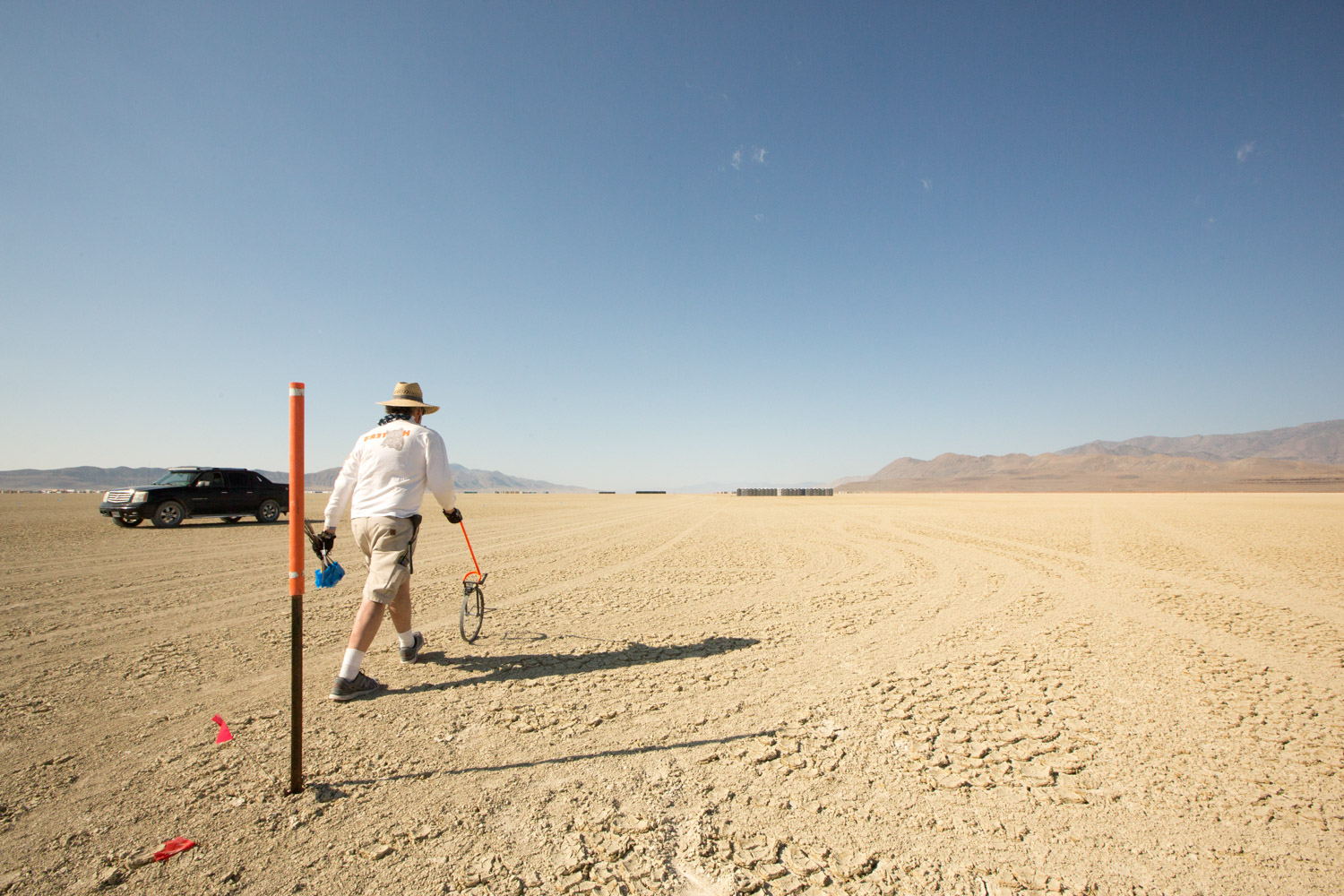
“It’s not for everyone,” Eric says as pushes his measuring wheel and clicks off the feet. “You walk probably ten miles a day,” and all that walking is done in the unrelenting heat of the desert, with not a bit of shade to be found. It also takes a pretty serious toll on your shoes, among other things, because the soil is so alkaline.
But there are some benefits, too – even as the city fills in, and more infrastructure is built, and more work camps are set up, the flaggers get to spend most of their days in the wide open parts of the city, where there is still nothing but playa vistas.
“It’s kind of a job for a loner,” Eric says, “but I kind of like wandering around.” He’s a geologist by trade, so being where people aren’t is nothing new for him.
Aeon is in her first year on the job, and she’s learning about the rhythms of the day even as she learns about the particulars of the task. “For the first half of the day, I love my job,” she says from her perch on a Cushman, “and then in the afternoon, I’m like, ‘Oh my gosh, this is hard,’ my brain starts to cook.”
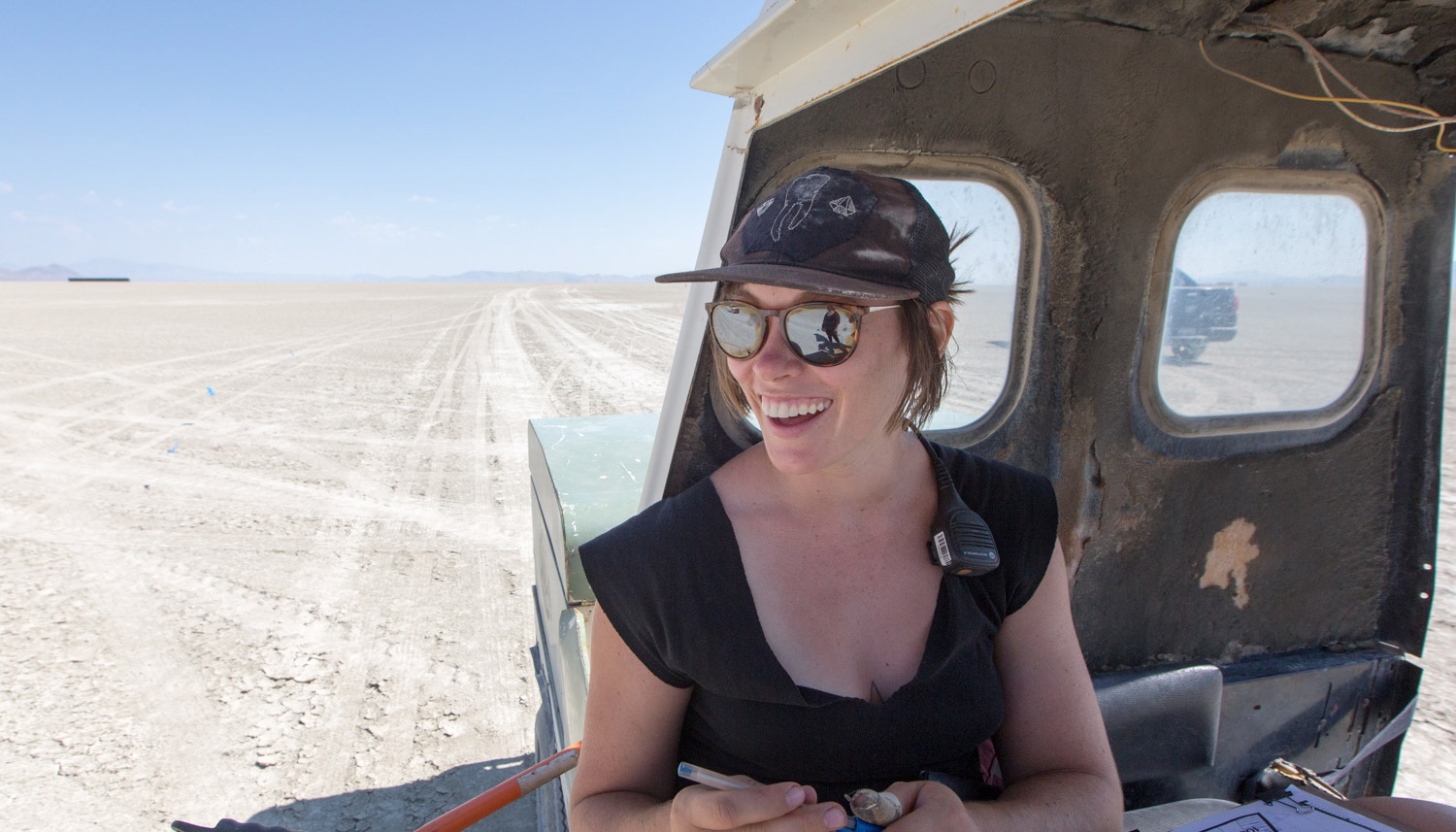
The man they call Machine stops by to check on their progress. He’s been out here doing flags for six or seven seasons, and he does his best to prevent territorial disputes from taking place when everyone gets here. We ask him where he’s headed next, and he simply answers, “Yes.” Everywhere and anywhere.
—
The flaggers work from paper grids that break the city down into 50-foot blocks. A camp may have say, 200 feet facing the street, and extend 50 feet in. The flaggers mark the boundaries with their blue flags, and then they place a yellow flag with the plot number along the frontage.
When campers arrive, other members of the Placement team will take them to where they are supposed to be, matching up the plot numbers on the flag with the names of the camps on their spreadsheets. Planners try to put similar camps in proximity – bars in one area, yoga camps in another, kids over there. There are lots of exceptions, of course, but you can get a sense of city’s diversity by moving from one neighborhood to the next.
But even with all the planning, plans on paper don’t always translate to reality on playa with perfect precision. Some graph-paper blocks that are supposed to represent 50 feet turn out to represent only 49, and others 51, because the city is built on a circle, and curving lines make it tougher to allocate exactly.
“Lots of the plots are trapezoids,” Eric says, “because the city is on a circle, and as you increase distance, the variation deviation increases.”
Carrots is in her third year of flagging, and she knows that not everyone is satisfied with her team’s work, no matter how hard they try to get it right. “If they can’t figure it out, Machine comes out and says, ‘It’s gonna be like this.’ ” And the lines are drawn, and that’s that, and have a nice burn.
Double blue flags indicate corners, single blue flags indicate boundaries, and the yellow flags are plot numbers. And flaggers try to have all the flags face the Man, which is the main point of reference.
—
“I love to watch the city being built,” Eric says, and that’s something you hear from all the flaggers. But again, hard work does not equal appreciation.
“We’re not DPW,” Carrots says. “We’re not the cool kids. We’re not doing heavy labor, with tools. We’re walking around putting flags in the ground. … We’re on our own little island.”
But still, the days are long and the sun is hot, and they play a key part in making the city work. So if you arrive and you find that your camp boundary is off by a little bit, have a heart and give an inch. Or a yard. Think of the people behind the flags, relax, and enjoy.
Here are some more pics:
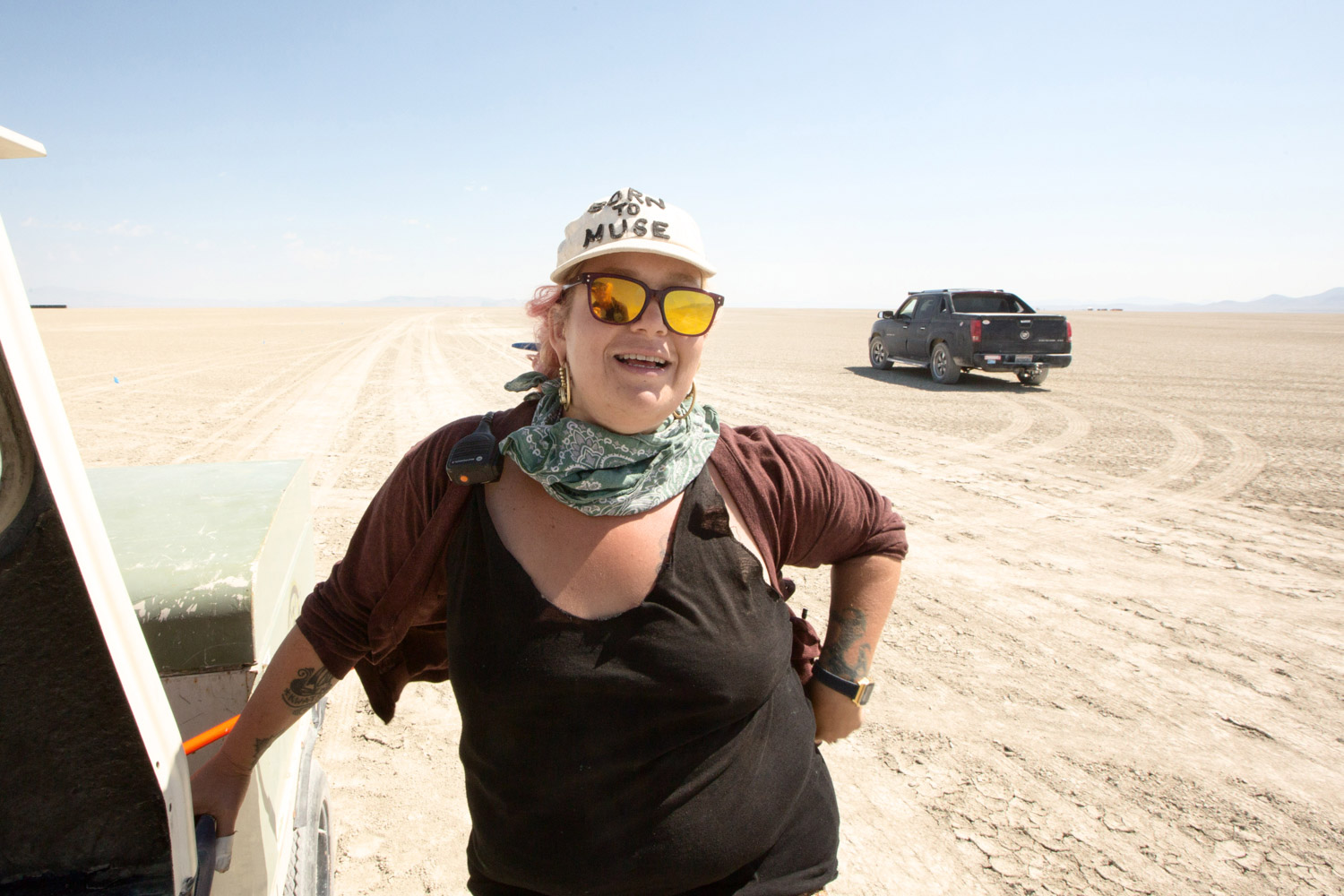
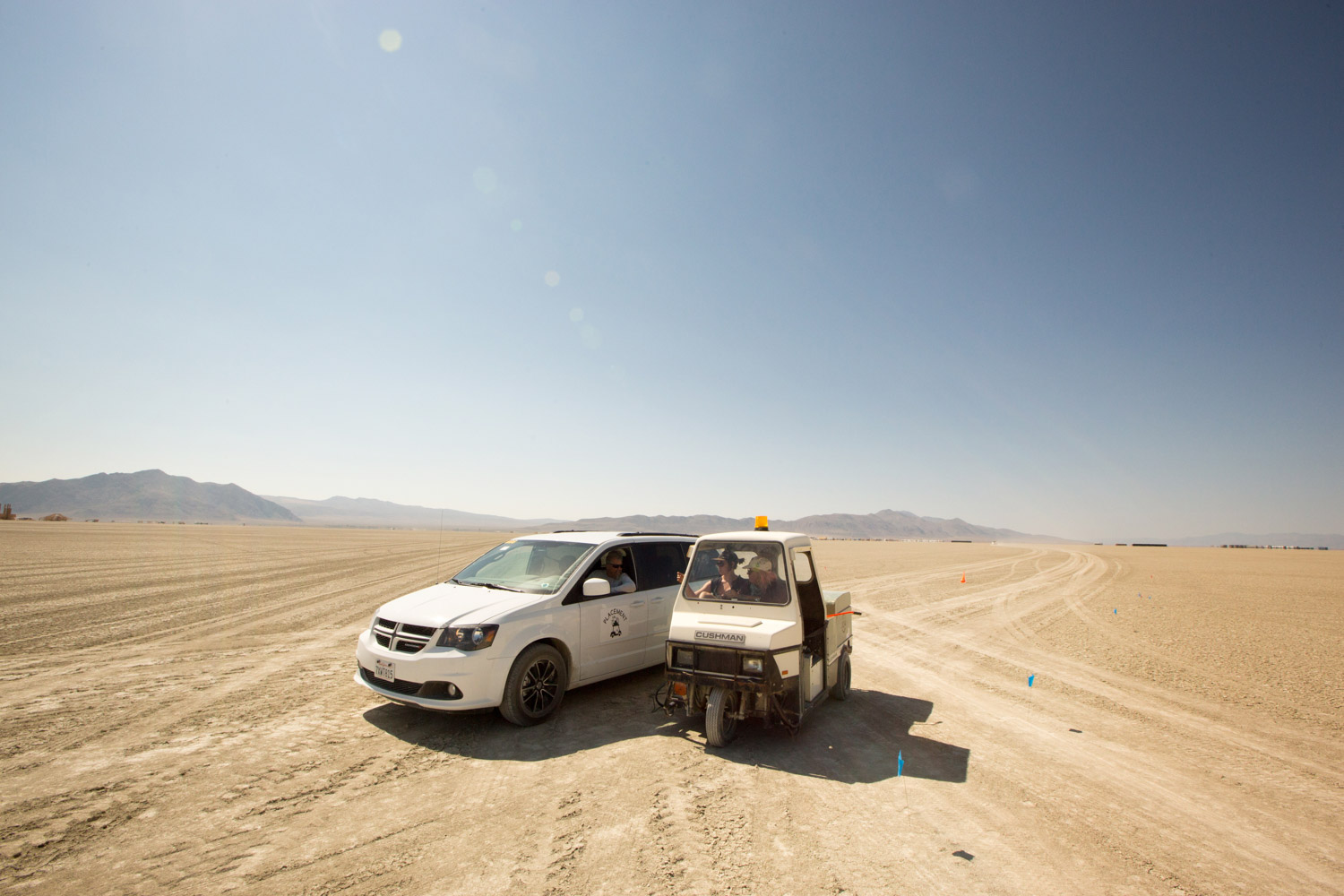

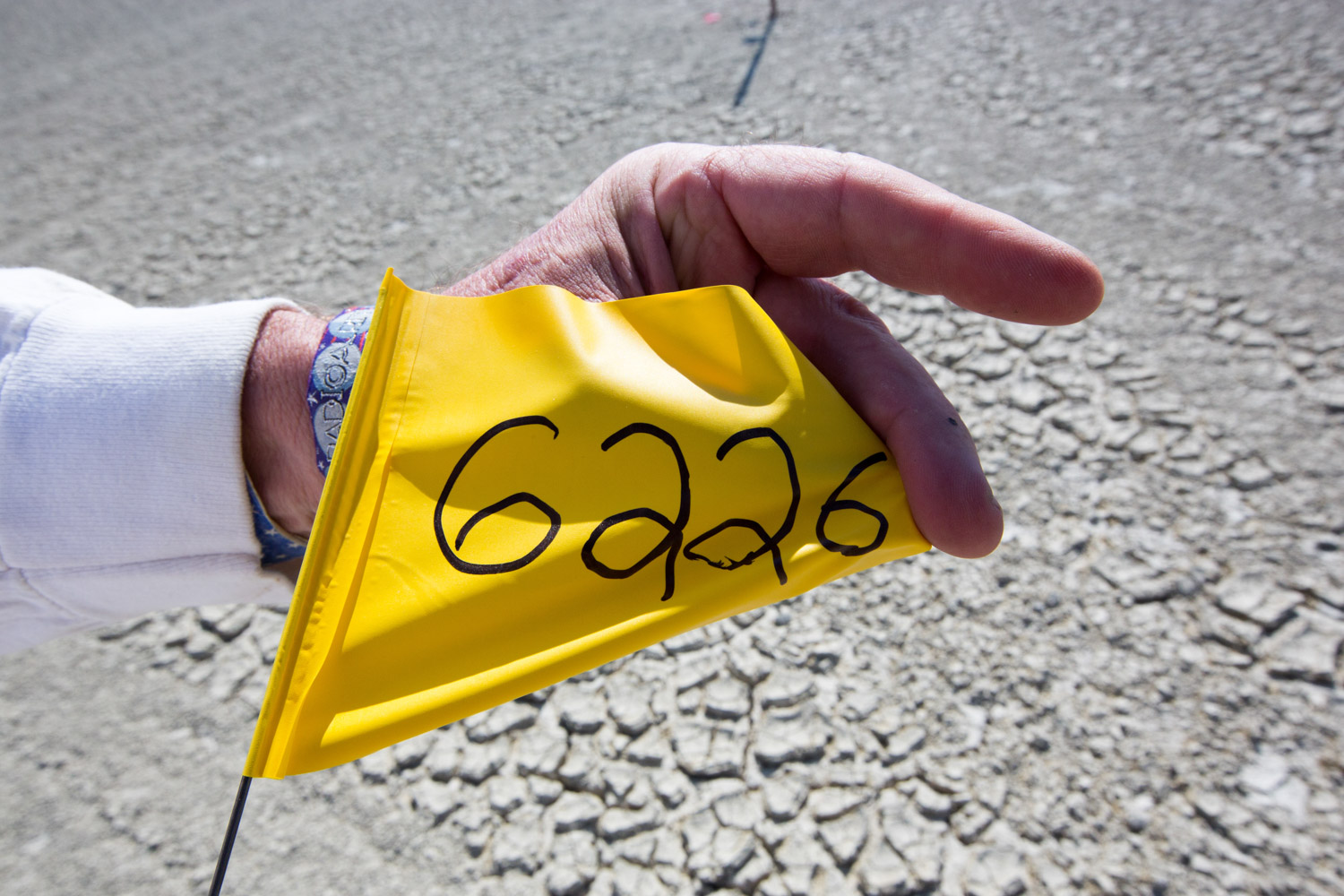

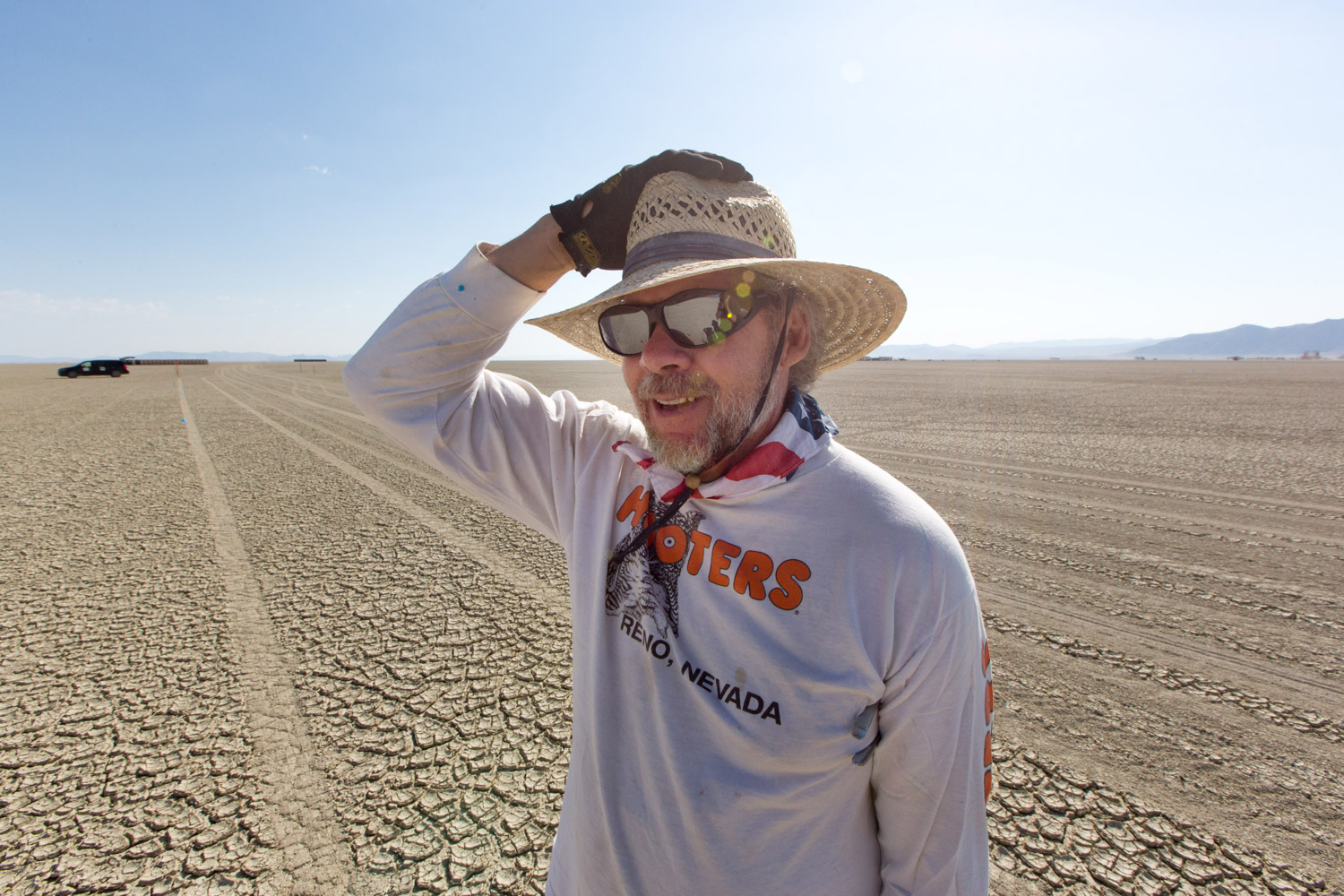
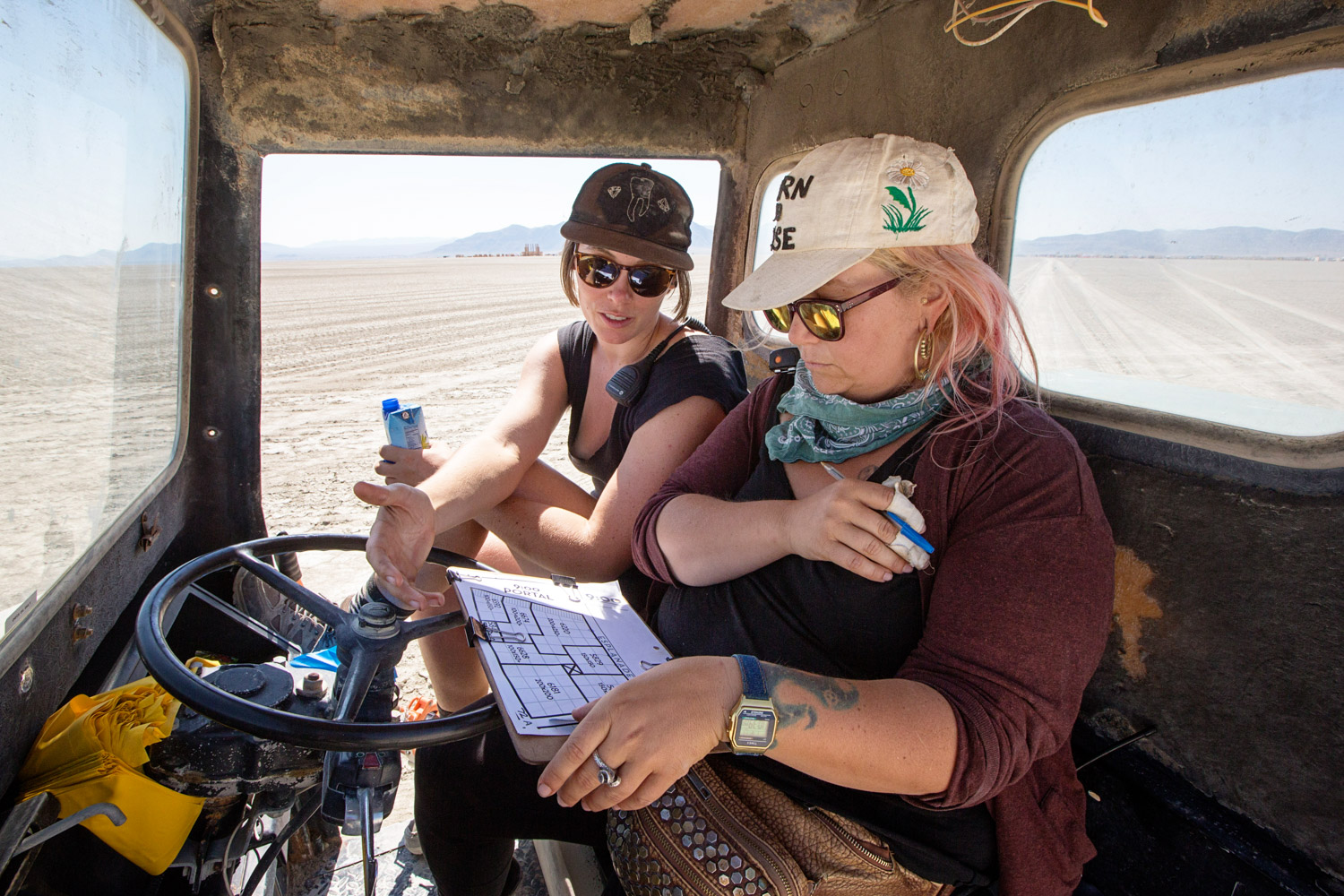
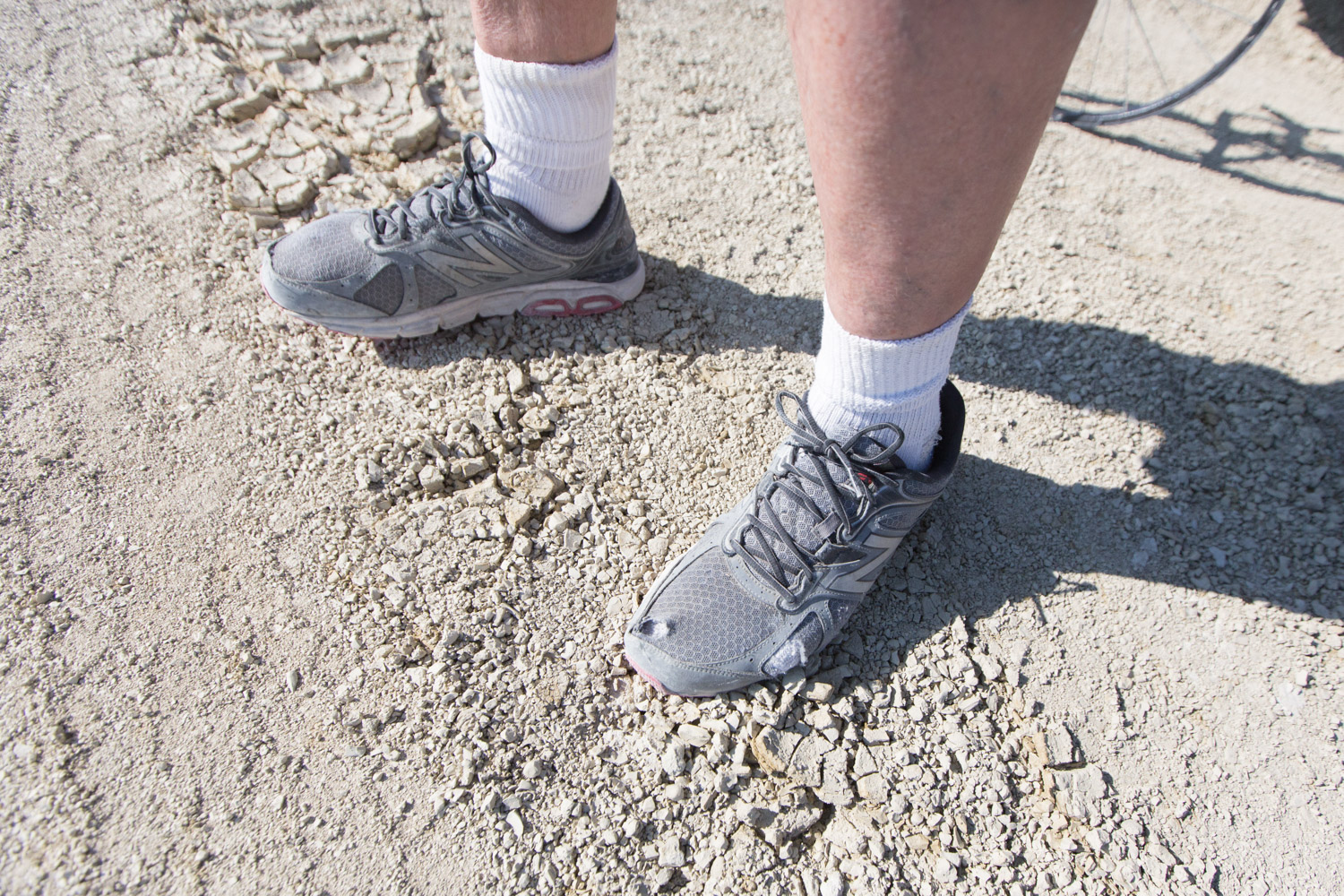
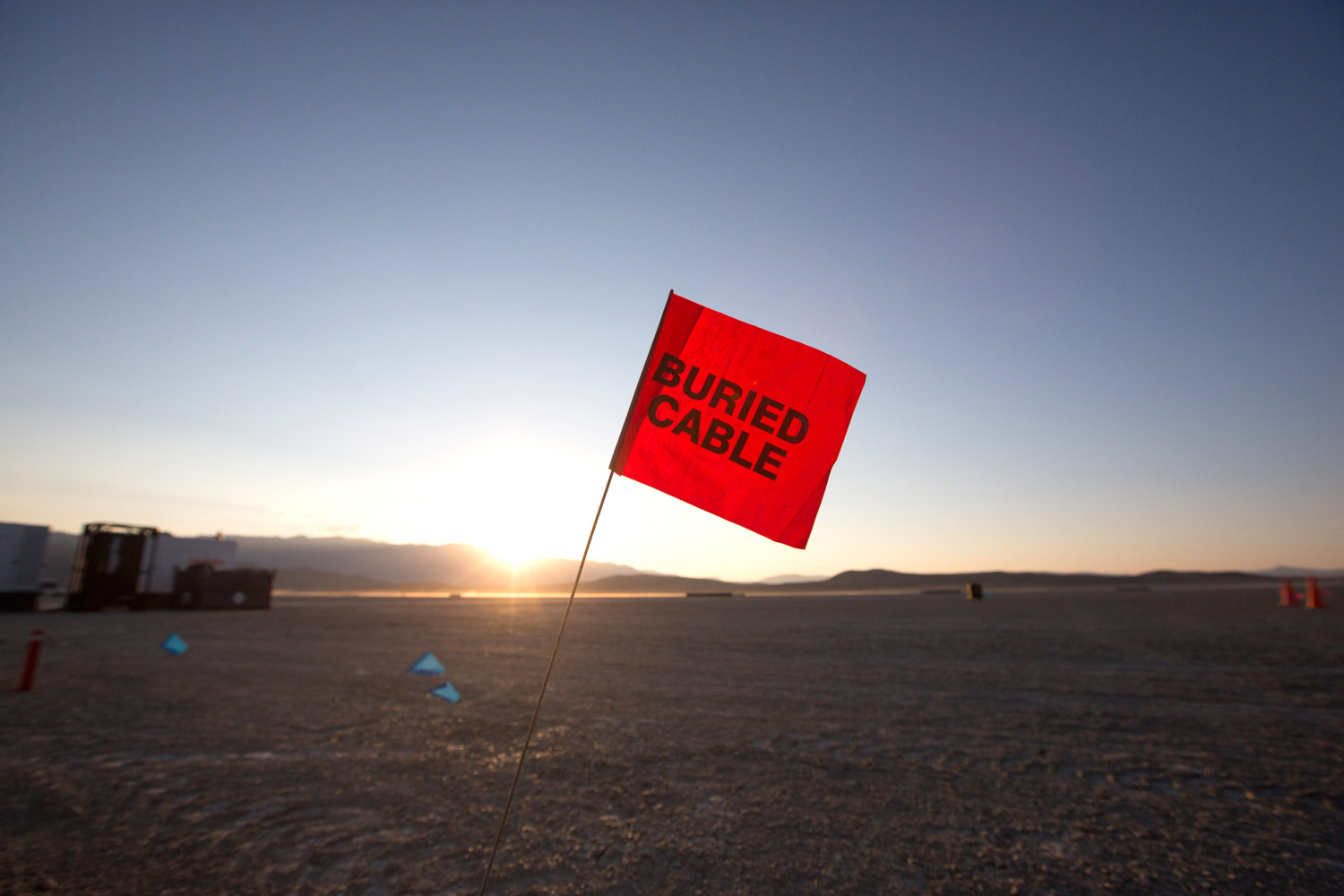

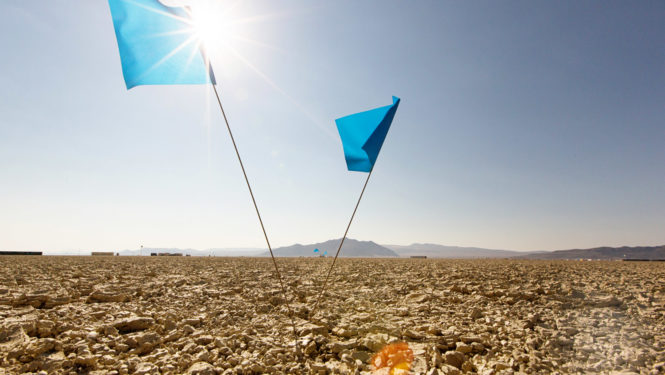
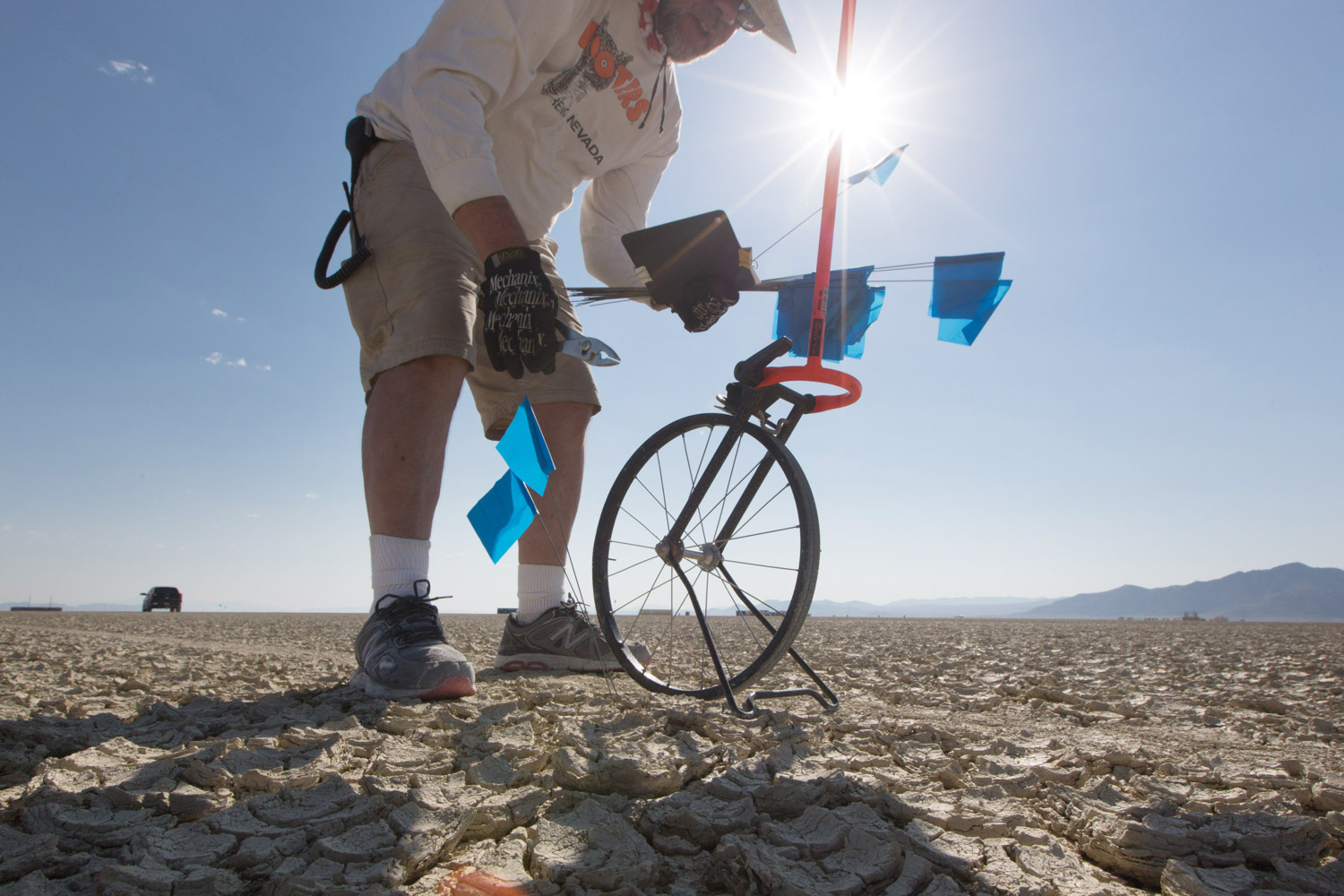
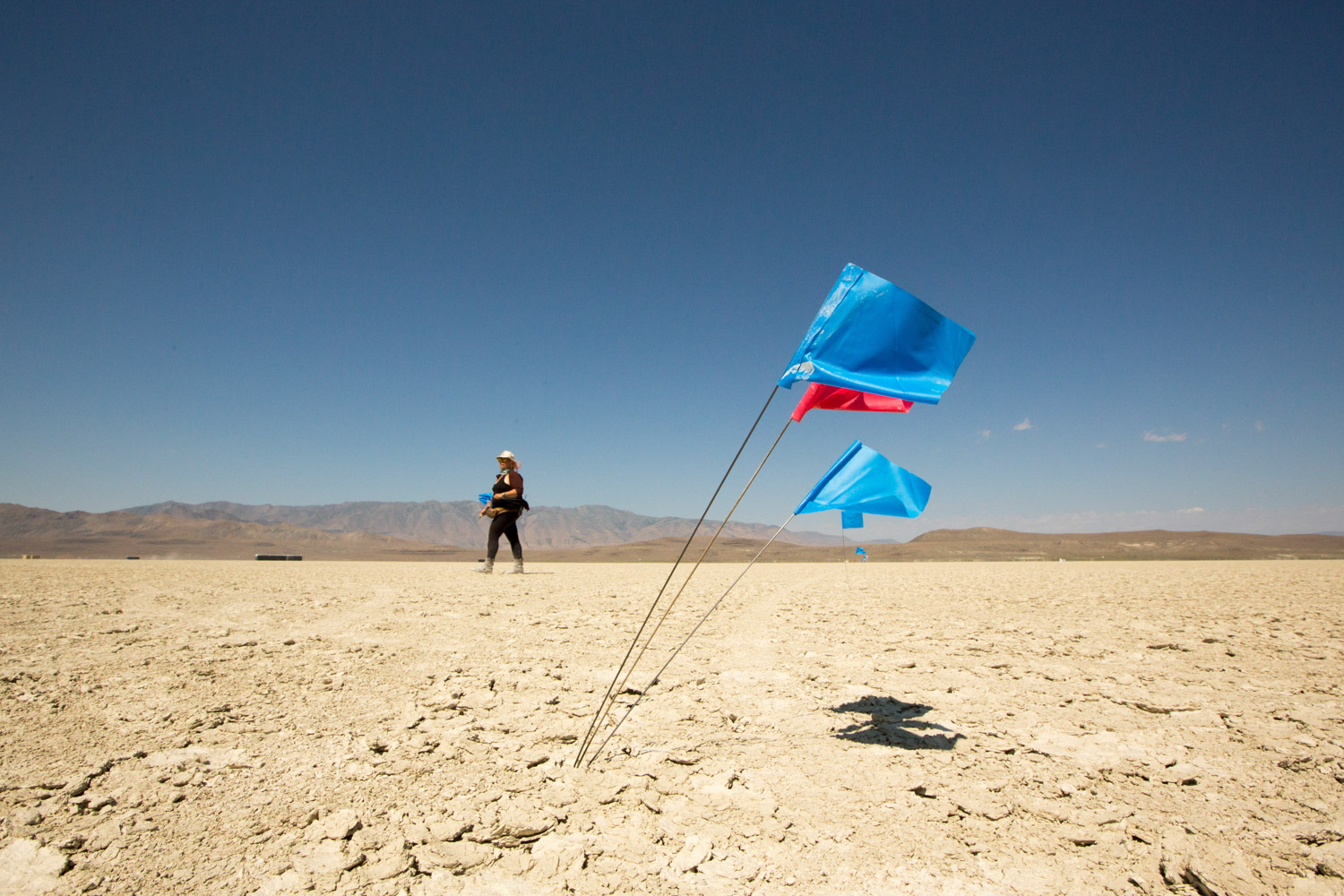
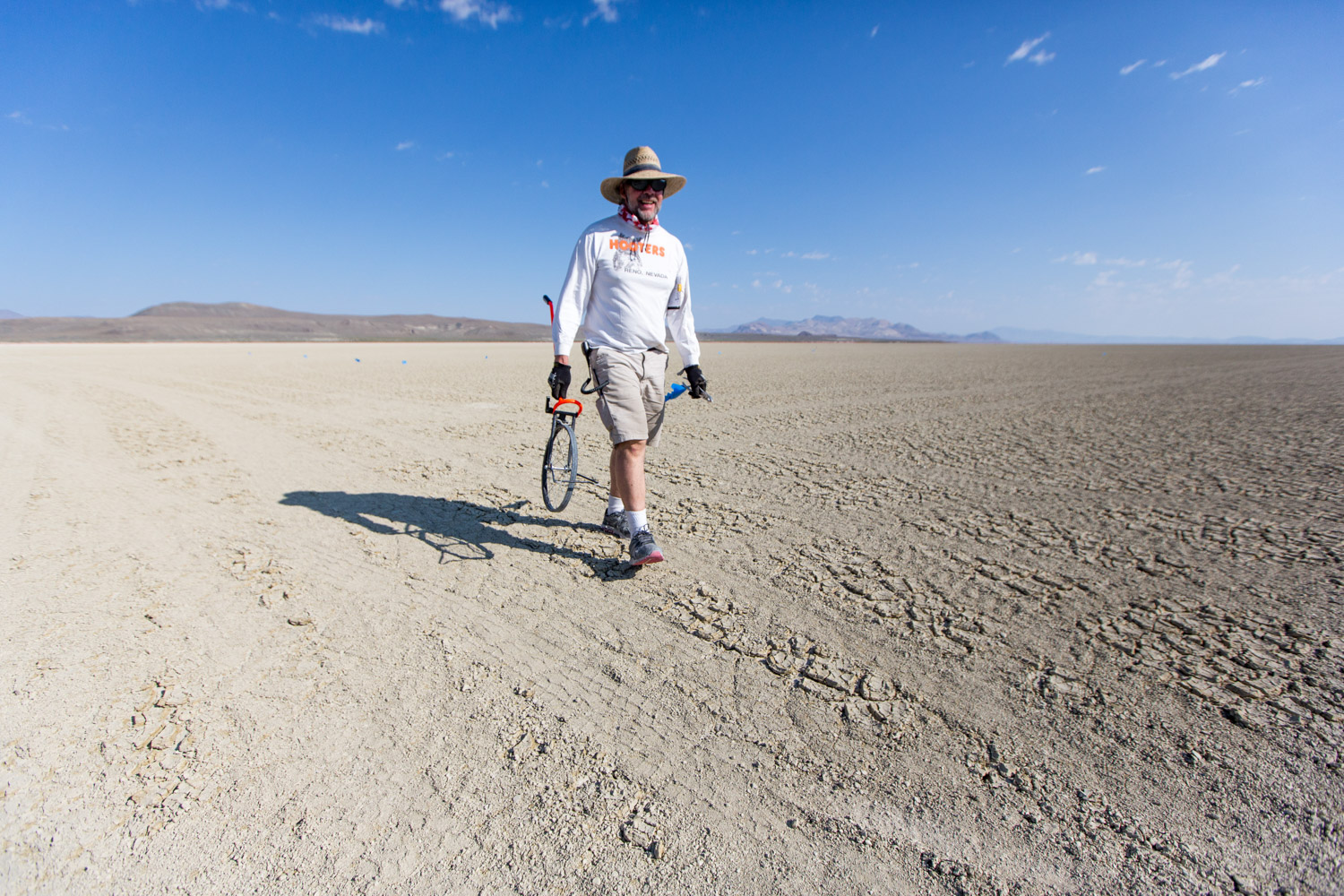


Thank you once again, John! It’s always nice to learn more about all of the small parts that make up the whole. I actually thought it was our Placers who did all of the flagging until this year. I wondered how they could possibly get that all done in just the few days they have before we all get there. It makes much more sense now and a big hats off to the flagging crew!
Report comment
thanks for reading!
Report comment
Major props to the flagging crew. It took me a few years before I fully understood the plots and the flags. When we had our own then camp it was always difficult to set boundaries but always let neighbors creep in if needed. This city and camp plots will not be bordered out of paranoia or selfishness. Last year I saw some camps that had way way more room than they needed. I hope this year as we are not doing a theme camp people with theme camps will allow the occasional “can I share some of your land”. Also unrelated, is the entire playa that crusty and potato chip style like I’m seen in 95% of the pics posted lately? Doesn’t matter to me but just curious. I actually enjoy the sound of riding over the crust! Thanks all you guys for everything you do!
Report comment
Excellent reporting (again) John!
Remember folks…Flags are not moot! Leave them in place for the restoration team to remove.
Report comment
DPW builds the city, a city of little flags.
Report comment
Love reading these “back of the house” stories! Thanks to the author and the flagging crew! We thank you for your hard work.
Report comment
I would probably be great at this job! I love to walk, and used to walk redundantly around Downtown Santa Cruz as a ‘Hospitality Guide’ lol 5-6 days/wk. My foot mileage would range between a minimum of 7mi/day- 11mi/day on concrete. Great job for a loner, which I LOVED.. As long as I have WATER, I’m good. Have a great BURN, everyone!!! Love from hippie dippie crazy dazy Satan’s Crue! ;)
Report comment
Are plot numbers new?(missed last year, but I’m back) I’m a ranger who comes in early and typically get called on to help find camp spaces. Is there a list of what those plot numbers signify that we can see? This might help us figure placement issues out and we wouldn’t have to call you as much.
Report comment
Hi Billy – plot numbers are not new, Placement & Flaggers have had them for many years. We do not share plot numbers publicly. The map could change right up until the Gate opens.
Any camps arriving with a WAP must speak with Greeters (or Gate if Greeters are closed) who will call the Placement team to place the camp. *Placement must place every camp in BRC.* We place the first arriving group. We experience many issues when other folks try to place camps, they may end up in the wrong spot, start setting up their camp, and then Placement comes along and sees it and they have to un-set up and move to their correct location. We absolutely want you to call us! Please call us! :)
Khaki has a map they use internally for managing Ranger operations during event week. Hope that information helps!
Trippi Longstocking
Placement Manager, Burning Man
Report comment
Trippi, so people avoid setting up in reserved space, what exactly are they looking for & should avoid? I once witnessed someone to get kicked out by placement because they set up somewhere they shouldn’t have. What’s the difference between open camping and reserved theme camp space as far as flagging goes? For example don’t set up between the pink flagging.
Report comment
Gotta love this story. One of the central ideas of Burning Man was to experience participation in a cool undertaking. Get in and bite it off, work hard in an off planet environment and feel the sweat running down your butt. Can’t do that in a cubicle, and that is one of the nerves the BM founders hit. The much maligned human beings like being in a big struggle for art’s sake. There just aren’t many opportunities. Color me human.
Report comment
Comments are closed.